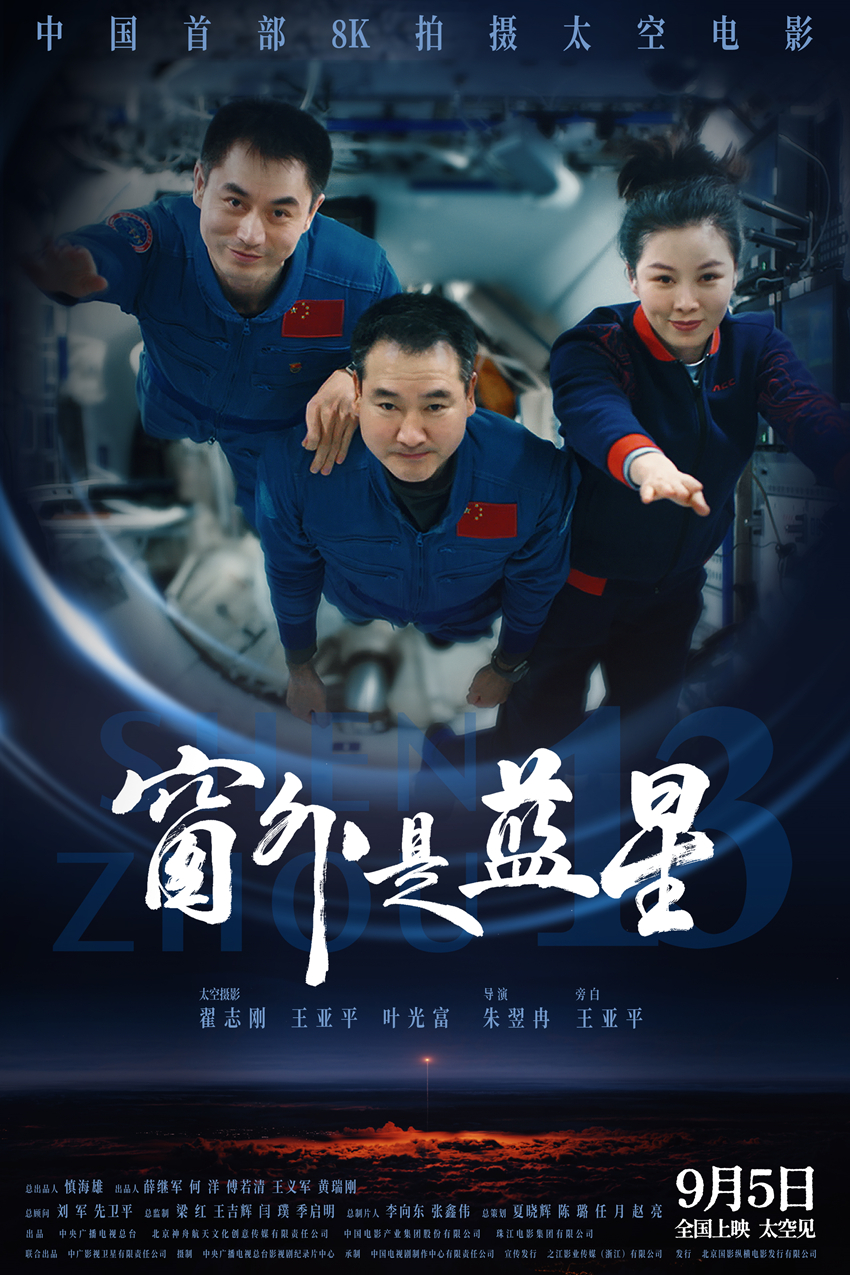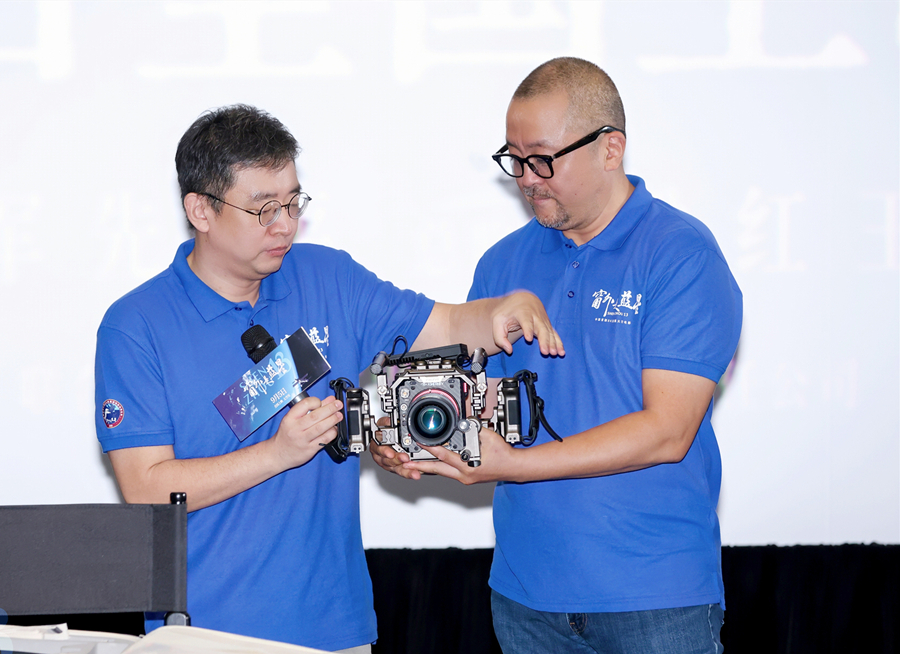Directing a documentary from Earth while your cinematographers work 400 kilometers above in space presents unique challenges, as filmmaker Zhu Yiran discovered while creating the first documentary filmed aboard China's space station.

Director Zhu Yiran. [Photo provided to China.org.cn]
"Shenzhou 13" was filmed in space by the Shenzhou-13 mission crew. Taikonauts Zhai Zhigang, Wang Yaping and Ye Guangfu captured the footage aboard China's Tiangong space station while serving as cinematographers.
Directed by Zhu Yiran from the Film, Drama and Documentary Programming Center of China Media Group (CMG), the documentary follows the crew during their six-month orbital mission. The project began in 2021 when China launched the space station's core module from Hainan.
"The idea for this documentary emerged as China was preparing to launch and build its own space station," he said. "Its arrival meant our manned space program would gain long-term workspace and orbital time. With China also leading in 8K ultrahigh definition technology, we believed combining these two advancements could create an entirely new form of filmmaking. That is why we decided to produce this space documentary."
The film was shot inside China's space station using innovative techniques, offering unseen views of space and orbital life. The documentary presents astronaut Wang's perspective, achieved through collaboration between the crew and Earth-based production teams.

A poster for "Shenzhou 13." [Photo courtesy of China Media Group]
Since camera components could not be replaced in space, the team developed specially adapted equipment compatible with China's space station to operate in weightlessness and withstand launch vibrations. However, they had only three hours of in-person training with the Shenzhou-13 crew to explain the documentary's objectives and camera operation.
Afterward, most filming details were coordinated through email and space-to-ground communications. Zhu joked that he was probably the only director in the world who had to follow the news to know what his cast and crew were doing. He added that he only met taikonauts Zhai Zhigang and Ye Guangfu again on Aug. 29 at the film's Beijing premiere.
"This required an extremely high level of tacit coordination," he said. "Normally, when we make films on Earth, we hold countless meetings. However, due to the astronauts' tight mission schedule, we had to rely on tacit understanding and shared consensus about what kind of film we were making to complete this creative process. It was a very unique experience."
Director Zhu said the film embodies the concept of "Chinese-style space aesthetics" — a uniquely Chinese cultural perspective on space, life and travel that reflects distinct values and ways of viewing Earth. He emphasized the contrast between life in China's space station and the International Space Station, noting that everything from filming techniques to the overall atmosphere embodies a distinctly Chinese identity in imagery, thinking and cultural expression.
Zhu explained that the film maintained a strict focus on space travel, deliberately avoiding unrelated elements. The narrative was structured around the astronauts' personal experiences — from adapting to orbital life and performing scientific duties to reflecting while observing Earth. The mission presented physical, operational and emotional challenges, including homesickness, while the crew's growing camaraderie unfolded naturally.
"This emotional arc, moving from initial excitement to deeper contemplation, mirrors both the psychological journey of space travel and the universal experience of embarking on a profound journey," he said.

Director Zhu Yiran showcases the specially made camera for "Shenzhou 13" at the premiere of the documentary in Beijing, Aug. 29, 2025. [Photo courtesy of China Media Group]
Zhu described a behind-the-scenes challenge: 8K filming at 50 frames per second created massive files, with each 1TB memory card holding only 10 minutes of footage. With just 40 cards available, efficient filming was essential. Weight limits in the return capsule forced astronauts to remove all packaging and leave behind two 8K cameras, bringing back only the bundled memory cards.
"Shenzhou 13," released nationwide on Sept. 5, has been praised as both a pioneering film and a national archival treasure documenting China's space journey. Zhu called the effort "a highly valuable exploration."
"I believe that as human spaceflight technology and China's film industry continue to advance, we may eventually see more productions shot partially or even entirely in space," he said. "Whether it's a documentary, a feature film, or a special-effects-driven project, shooting in space could become a regular part of filmmaking. This would be a major step forward. The release of 'Shenzhou 13' will hopefully help accelerate this future."





 Share:
Share: 






 京公网安备
11010802027341号
京公网安备
11010802027341号